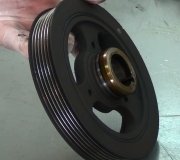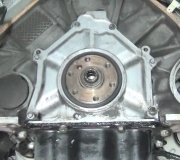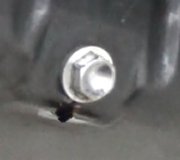When I blocked the tail pipe with my hand the engine stay running as usual, it didn't stall, it didn't changed a bit and I didn't hear any leakage sound. Since I didn't have a second hand to block the tail pipe, I blocked the tail pipe completely secured with a band, while checking for leak
along the exhaust pipe under the car.
I didn't manage to see or hear any leakage, but the strange thing is that the engine was running as usual while the tail pipe is completely block for more than 5 minutes and even if I was leaving the block on the tail pipe for more time I assume that it was keep on running.
My question:Is it possible that in those +5 minutes that the tail pipe was blocked, all the gasses get into the oil sump through the old piston rings and contaminates the oil?
I worry that I did a mistake to block the tail pipe so long?
Thanks.
Tuesday, April 9th, 2019 AT 7:29 AM


